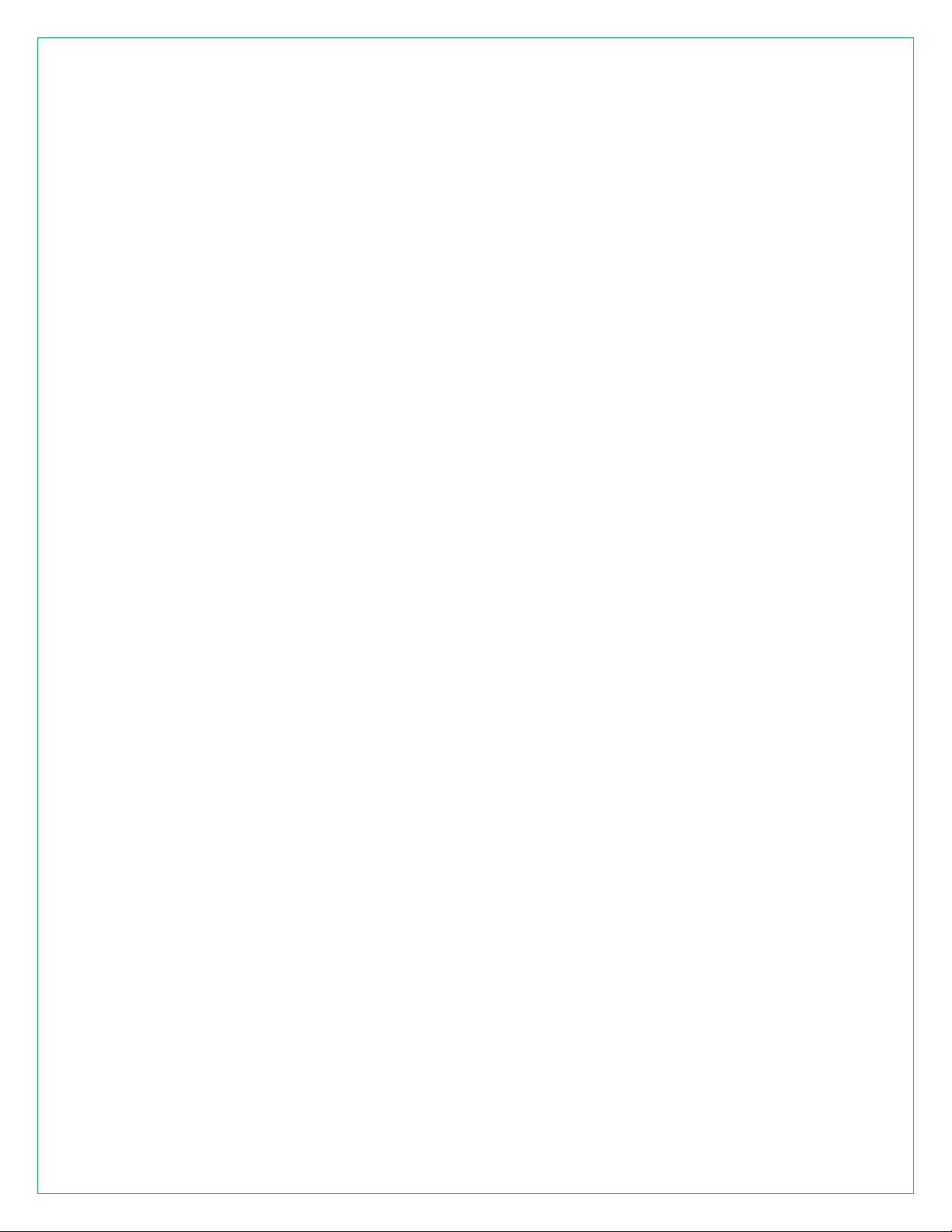
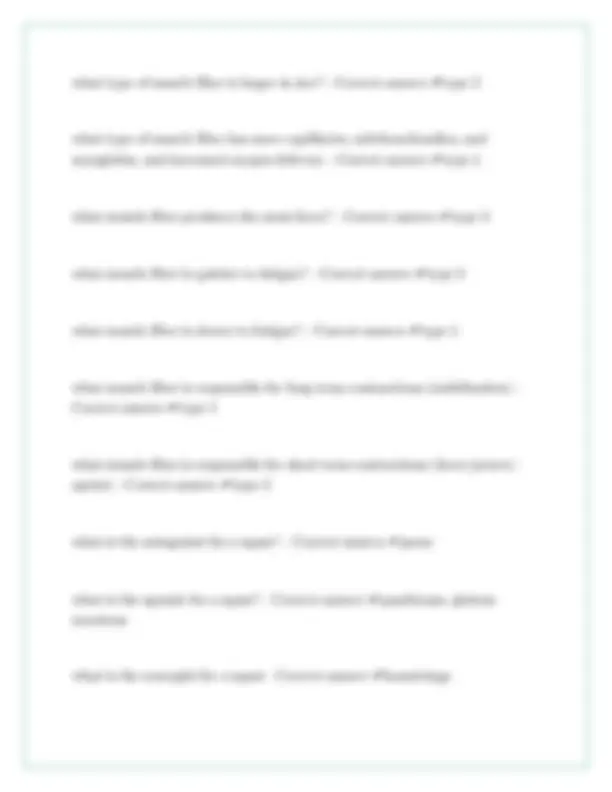
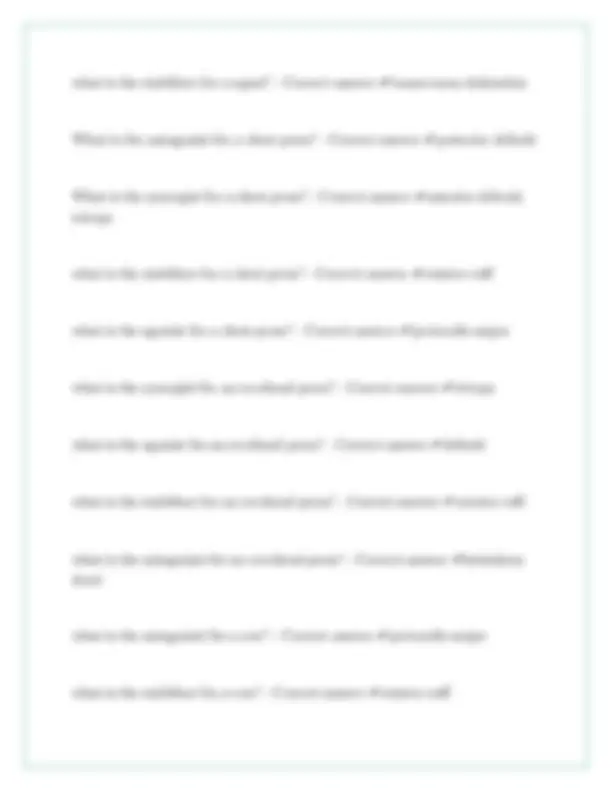
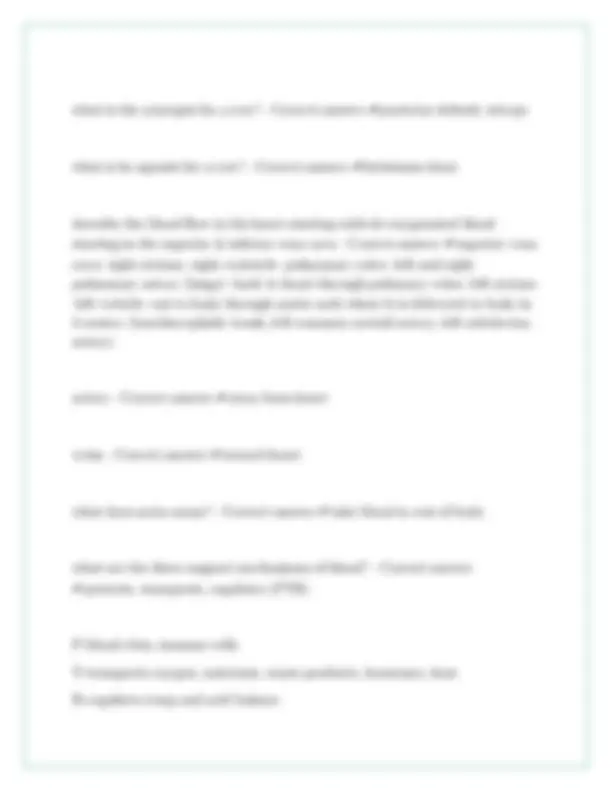
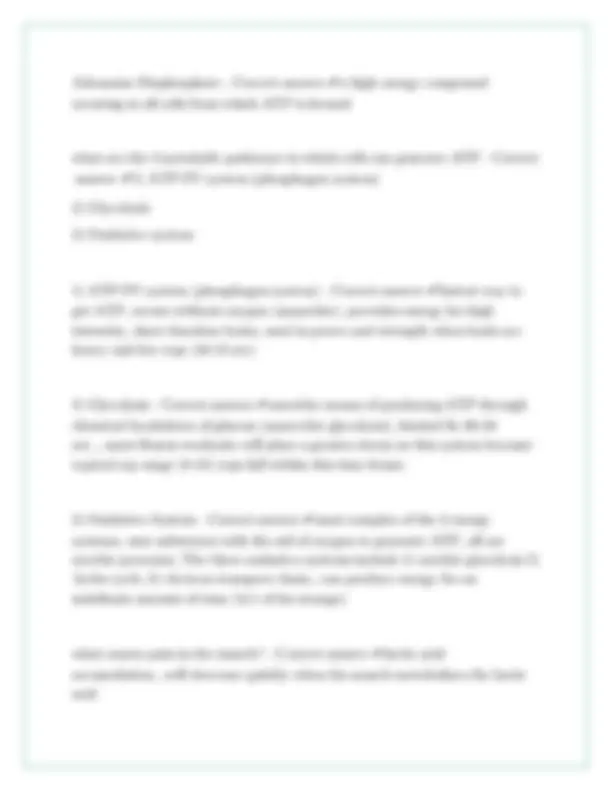
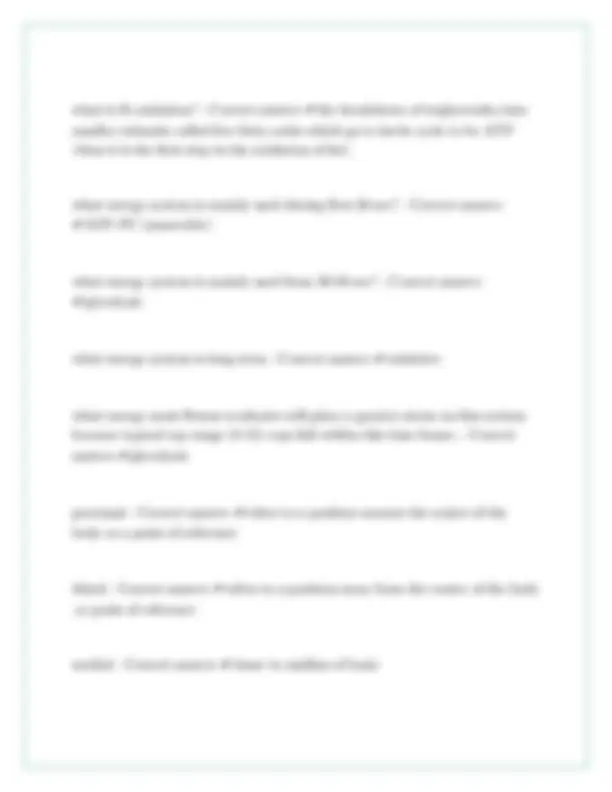
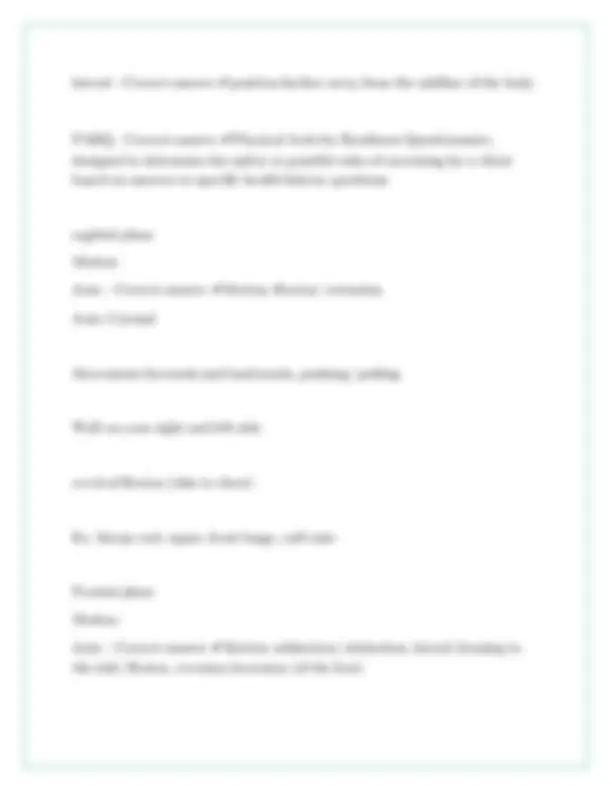
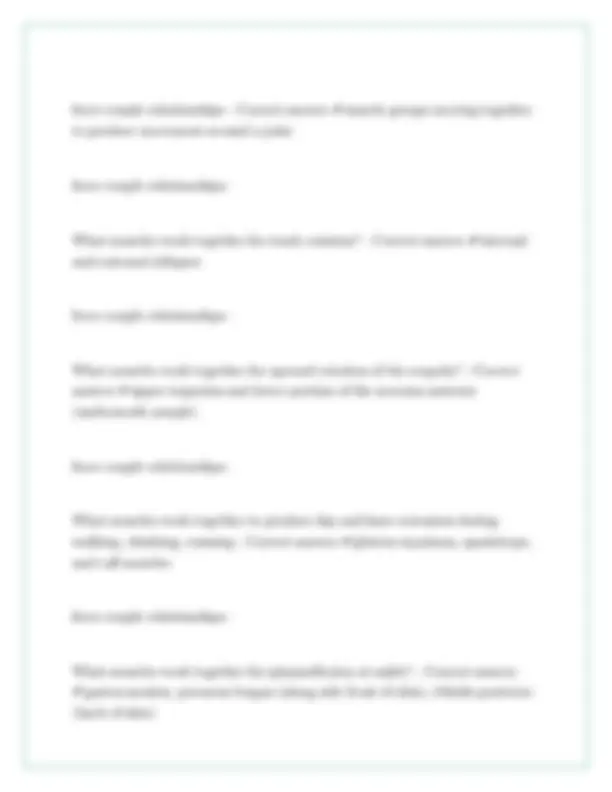
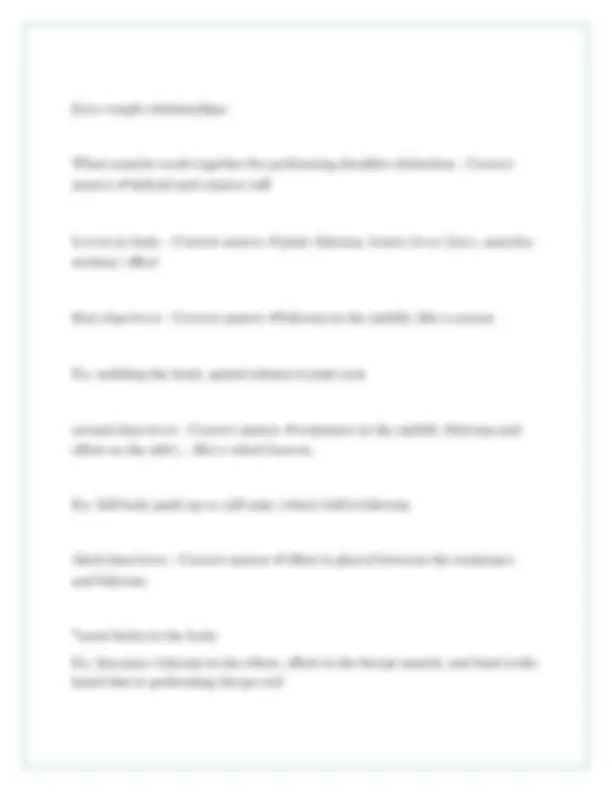
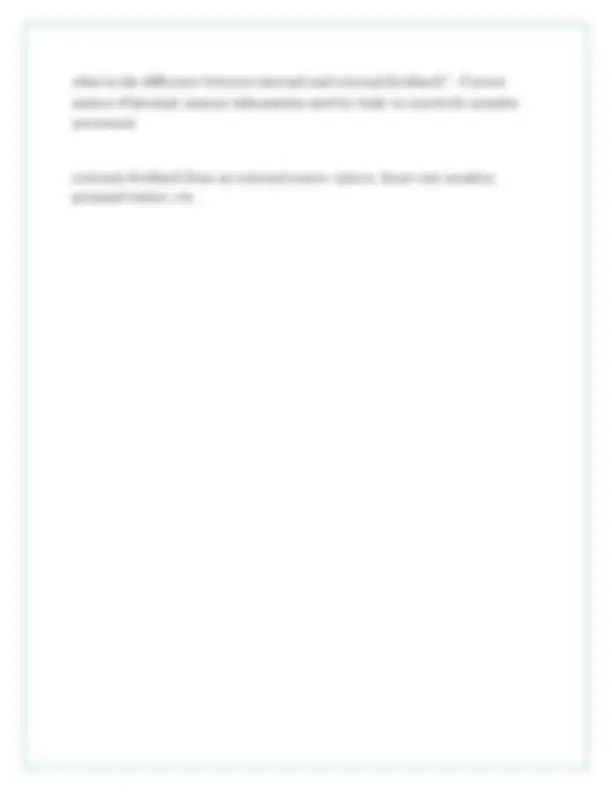


Study with the several resources on Docsity

Earn points by helping other students or get them with a premium plan


Prepare for your exams
Study with the several resources on Docsity

Earn points to download
Earn points by helping other students or get them with a premium plan
Community
Ask the community for help and clear up your study doubts
Discover the best universities in your country according to Docsity users
Free resources
Download our free guides on studying techniques, anxiety management strategies, and thesis advice from Docsity tutors
This study guide provides a comprehensive overview of key concepts in exercise physiology, focusing on muscle structure, contraction mechanisms, and energy systems. It covers topics such as muscle fiber types (type i and type ii), the roles of actin and myosin in muscle contraction, and the metabolic pathways involved in atp production. Additionally, it explores the roles of different muscles during exercises like squats and chest presses, detailing agonists, antagonists, synergists, and stabilizers. Designed to help students prepare for exams by providing verified answers to common questions.
Typology: Exams
1 / 15

This page cannot be seen from the preview
Don't miss anything!










how || many || years || do || you || need || to || keep || client || records/ || tax || records || etc. || - || Correct || answer || ✔ 4 what || connects || bone || to || bone? || - || Correct || answer || ✔ligament what || connects || bone || to || muscle? || - || Correct || answer || ✔tendon what || is || the || most || inner || layer || of || a || muscle || fiber || (i.e. || what || covers || just || 1 || tinny || muscle || fiber?) || - || Correct || answer || ✔connective || tissue || called || endomysium A || group || of || muscle || fibers || make || a || muscle || fascicle. || Each || muscle || fascicle || is || made || surrounded || by || connective || tissue || called || - || Correct || answer || ✔perimysium A || group || of || muscle || fascicle || make || a || muscle. || Each || muscle || surrounded || by || 2 || connective || tissues || called || - || Correct || answer || ✔fascia || (on || top), || and || epimysium || (on || bottom), || which || are || also || connected || to || the || bone || to || help || form || a || muscles || tendon
What || is || the || functional || unit || of || a || muscle || that || produces || muscular || contraction || and || consists || of || repeating || sections || of || actin || and || myosin || - || Correct || answer || ✔sacromere how || does || a || muscle || contraction || begin? || - || Correct || answer || ✔ACH || released || to || binding || receptors, || action || reaches || T || tubule, || sacroplasmic || reticulum || releases || CA2t, || active || site || exposure || cross-bridge || binding || (actin || and || myosin || overlap), || z || lines || get || shorter, || contraction || begins how || does || a || muscle || contraction || end? || - || Correct || answer || ✔ACH || removed || by || ACHE, || sarcoplasmic || reticulum || recaptures || CA2t, || active || site || covered, || so || there || is || no || cross || bridge || interaction || between || actin || and || myosin, || contraction || ends, || returns || to || passive, || resting || length What || type || of || muscle || is || slow || twitch? || - || Correct || answer || ✔type || 1 what || type || of || muscle || is || fast || twitch? || - || Correct || answer || ✔type || 2 what || type || of || muscle || fiber || has || fewer || capillaries, || mitchochondria, || and || myoglobin? || - || Correct || answer || ✔type || 2 what || type || of || muscle || fiber || has || decreased || oxygen || delivery || - || Correct || answer || ✔type || 2 what || type || of || muscle || fiber || is || smaller || is || size? || - || Correct || answer || ✔type || 1
what || is || the || stabilizer || for || a || squat? || - || Correct || answer || ✔transversus || abdominis What || is || the || antagonist || for || a || chest || press? || - || Correct || answer || ✔posterior || deltoid What || is || the || synergist || for || a || chest || press? || - || Correct || answer || ✔anterior || deltoid, || triceps what || is || the || stabilizer || for || a || chest || press? || - || Correct || answer || ✔rotator || cuff what || is || the || agonist || for || a || chest || press? || - || Correct || answer || ✔pectoralis || major what || is || the || synergist || for || an || overhead || press? || - || Correct || answer || ✔triceps what || is || the || agonist || for || an || overhead || press? || - || Correct || answer || ✔deltoid what || is || the || stabilizer || for || an || overhead || press? || - || Correct || answer || ✔rotator || cuff what || is || the || antagonist || for || an || overhead || press? || - || Correct || answer || ✔latissimus || dorsi what || is || the || antagonist || for || a || row? || - || Correct || answer || ✔pectoralis || major what || is || the || stabilizer || for || a || row? || - || Correct || answer || ✔rotator || cuff
what || is || the || synergist || for || a || row? || - || Correct || answer || ✔posterior || deltoid, || triceps what || is || he || agonist || for || a || row? || - || Correct || answer || ✔latissimus || dorsi describe || the || blood || flow || in || the || heart || starting || with || de-oxygenated || blood || starting || in || the || superior || & || inferior || vena || cava || - || Correct || answer || ✔superior || vena || cava- || right || atrium- || right || ventricle- || pulmonary || valve- || left || and || right || pulmonary || artery || (lungs)- || back || to || heart || through || pulmoary || veins- || left || atrium- || left || verticle- || out || to || body || through || aortic || arch || where || it || is || delivered || to || body || in || 3 || routes: || (brachiocephalic || trunk, || left || common || cartoid || artery, || left || subclavian || artery) artery || - || Correct || answer || ✔away || from || heart veins || - || Correct || answer || ✔toward || heart what || does || aorta || mean? || - || Correct || answer || ✔take || blood || to || rest || of || body what || are || the || three || support || mechanisms || of || blood? || - || Correct || answer || ✔protects, || transports, || regulates || (PTR) P-blood || clots, || immune || cells T-transports || oxygen, || nutrients, || waste || products, || hormones, || heat R-regulates || temp || and || acid || balance
substrates || - || Correct || answer || ✔material || or || substance || on || which || an || enzyme || acts glucose || - || Correct || answer || ✔a || simple || sugar || manufactured || by || the || body || from || carbohydrates, || fat, || and || to || a || lesser || extent || protein, || serves || as || the || bodies || main || source || of || fuel glycogen || - || Correct || answer || ✔complex || carbohydrate || molecule || used || to || store || carbohydrates || in || the || liver || and || muscle || cells. || Converted || to || glucose || when || energy || is || needed triglycerides || - || Correct || answer || ✔chemical || for || substrates || form || in || which || most || fat || exists || in || food || as || well || as || in || the || body protein || - || Correct || answer || ✔made || up || of || amino || acids gluconeogenesis || - || Correct || answer || ✔formation || of || glucose || from || noncarbohydrate || sources || such || as || amino || acids adenosine || triphosphate || - || Correct || answer || ✔energy || storage || and || transfer || unit || within || the || cells || of || the || body || (ATP), || when || the || chemical || bonds || that || hold || ATP || together || are || broken, || energy || is || released || for || cellular || work || (such || as || performing || a || muscle || contraction), || leaving || behind || another || molecule || called || Adenosine || Diphosphate
Adenosine || Disphosphate || - || Correct || answer || ✔a || high || energy || compound || occuring || in || all || cells || from || which || ATP || is || formed what || are || the || 3 || metabolic || pathways || in || which || cells || can || generate || ATP || - || Correct || answer || ✔1) || ATP-PC || system || (phosphagen || system)
lateral || - || Correct || answer || ✔position || farther || away || from || the || midline || of || the || body PARQ || - || Correct || answer || ✔Physical || Activity || Readiness || Questionnaire, || designed || to || determine || the || safety || or || possible || risks || of || exercising || for || a || client || based || on || answers || to || specific || health || history || questions sagittal || plane Motion: Axis: || - || Correct || answer || ✔Motion: || flexion/ || extension Axis: || Coronal Movements || forwards || and || backwards, || pushing/ || pulling Wall || on || your || right || and || left || side cervical || flexion || (chin || to || chest) Ex. || biceps || curl, || squat, || front || lunge, || calf || raise Frontal || plane Motion: Axis: || - || Correct || answer || ✔Motion: || adduction/ || abduction, || lateral || (leaning || to || the || side) || flexion, || eversion/inversion || (of || the || foot)
Imagine || a || wall || in || front || and || back || of || you Axis: || anterior/ || posterior || Ex. || side || lunge, || side || lateral || raise, || side || shuffle, || cervical || lateral || flexion Transverse || plane || - || Correct || answer || ✔Motion: || internal/ || external || rotation, || left/right || rotation, || horizontal || adduction/ || abduction || (shoulder || horizontal || abduction, || anterior- || lateral || putting || arms || straight || out || infront || and || moving || them || to || the || side..... || shoulder || horizontal || adduction, || lateral || to || anterior, || taking || arms || to || side || of || shoulders || and || moving || them || to || the || front) Axis: || Longitudinal Rotational || movements, || diagonal || movements Ex. || trunk || rotation, || throwing, || golfing, || swinging || a || bat What || is || it || called || when || you || move || your || shoulders || down? || - || Correct || answer || ✔scapular || depression, || up= || elevation what || is || called || when || you || pull || your || shoulder || blades || back || together || - || Correct || answer || ✔scapular || retraction, || towards || breast= || protraction
force || couple || relationships || - || Correct || answer || ✔muscle || groups || moving || together || to || produce || movement || around || a || joint force || couple || relationships: What || muscles || work || together || for || truck || rotation? || - || Correct || answer || ✔internal || and || external || obliques force || couple || relationships: What || muscles || work || together || for || upward || rotation || of || the || scapula? || - || Correct || answer || ✔upper || trapezius || and || lower || portion || of || the || serratus || anterior || (underneath || armpit) force || couple || relationships: What || muscles || work || together || to || produce || hip || and || knee || extension || during || walking, || climbing, || running || - || Correct || answer || ✔gluteus || maximus, || quadriceps, || and || calf || muscles force || couple || relationships: What || muscles || work || together || for || plantarflexion || at || ankle? || - || Correct || answer || ✔gastrocnemius, || peroneus || longus || (along || side || front || of || shin), || tibialis || posterior || (back || of || shin)
force || couple || relationships: What || muscles || work || together || for || performing || shoulder || abduction || - || Correct || answer || ✔deltoid || and || rotator || cuff Levers || in || body || - || Correct || answer || ✔joint: || fulcrum, || bones: || lever || (bar), || muscles: || motion/ || effort first || class || lever || - || Correct || answer || ✔fulcrum || in || the || middle, || like || a || seesaw || Ex. || nodding || the || head, || spinal || column || is || joint || axis second || class || lever || - || Correct || answer || ✔resistance || in || the || middle || (folcrum || and || effort || on || the || side)....like || a || wheel || barrow, || Ex. || full || body || push || up || or || calf || raise || (where || ball || is || fulcrum third || class || lever || - || Correct || answer || ✔effort || is || placed || between || the || resistance || and || fulcrum *most || limbs || in || the || body Ex. || forearm= || folcrum || is || the || elbow, || effort || is || the || biceps || muscle, || and || load || is || the || hand || that || is || performing || biceps || curl